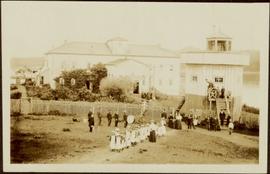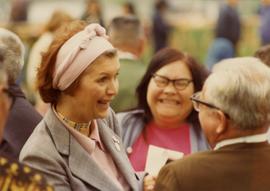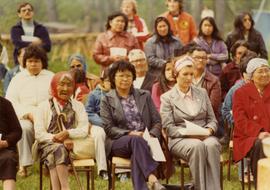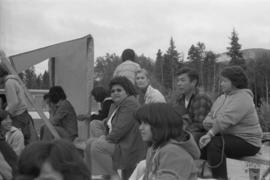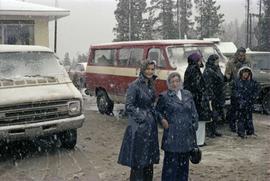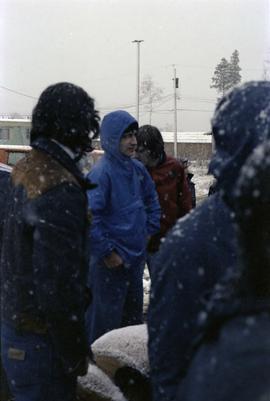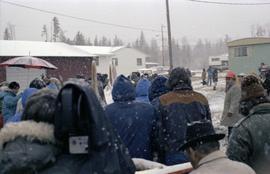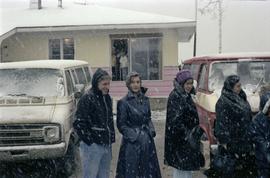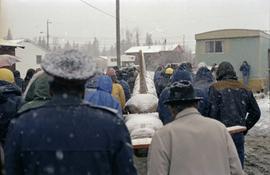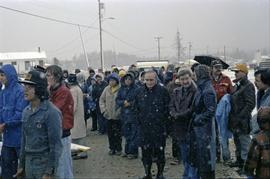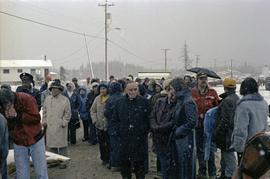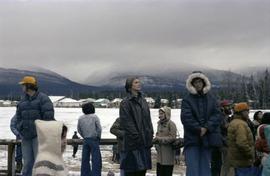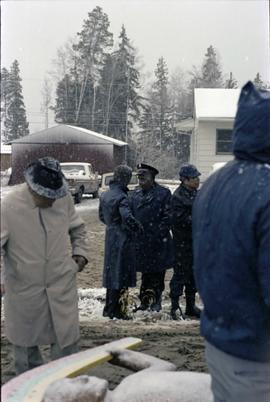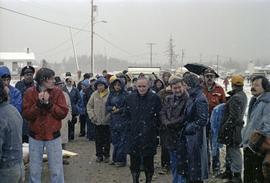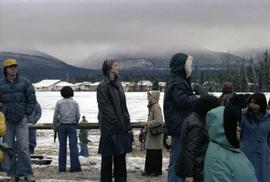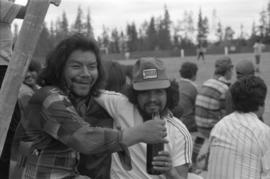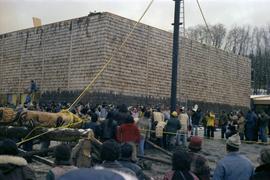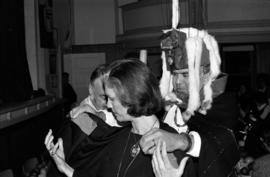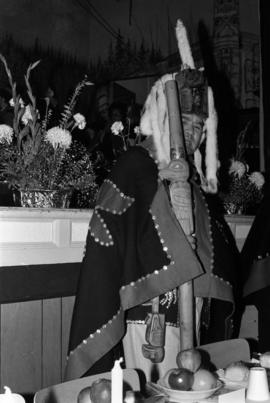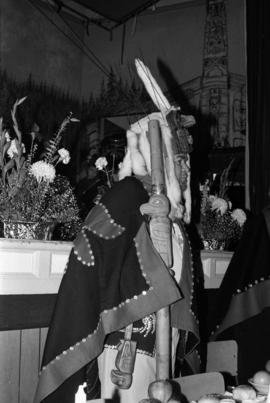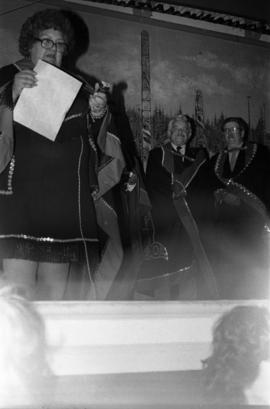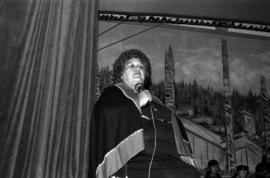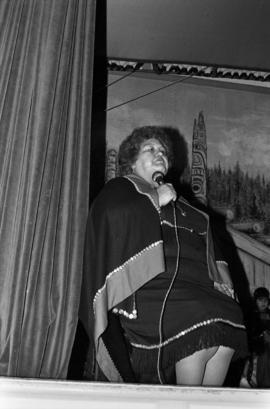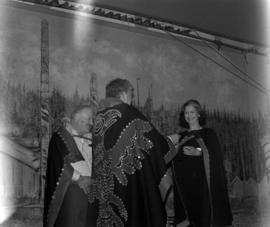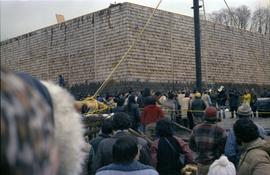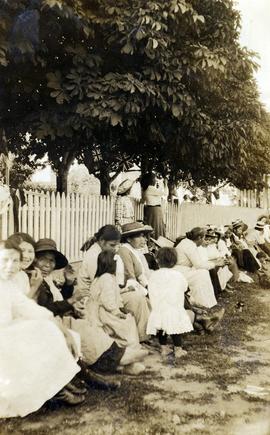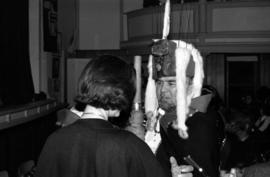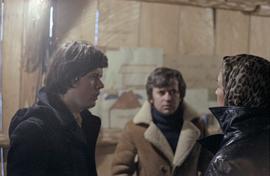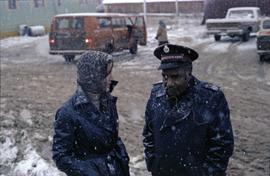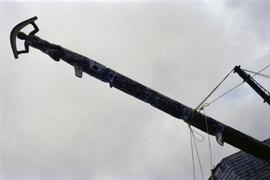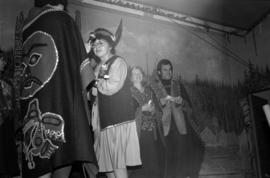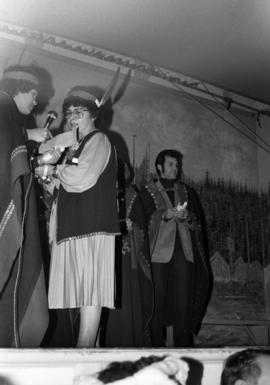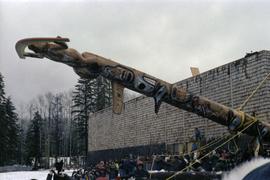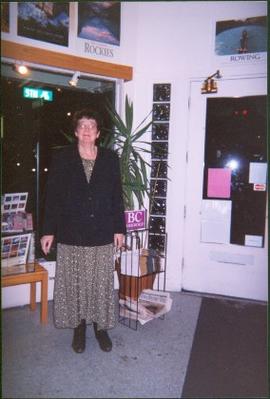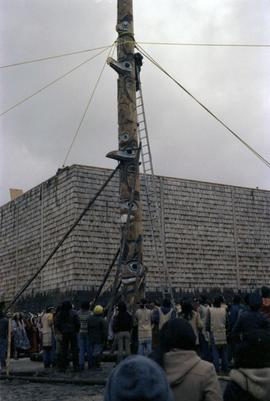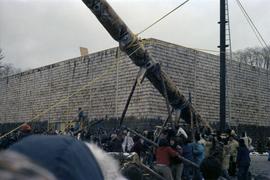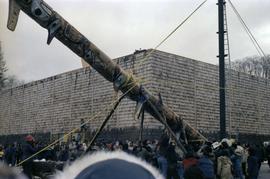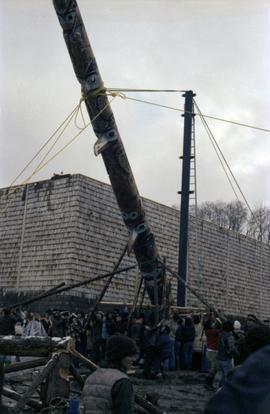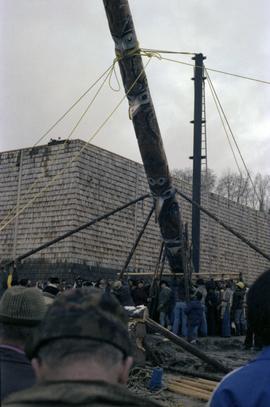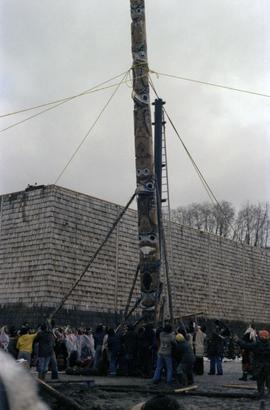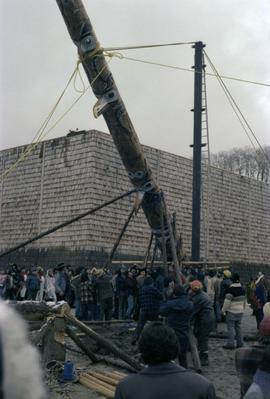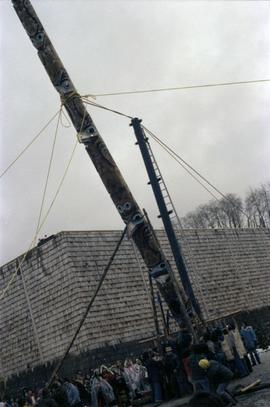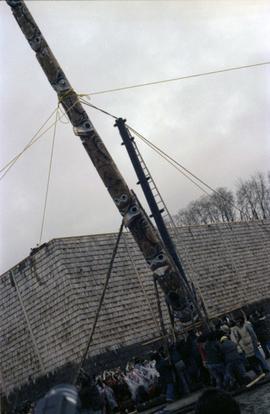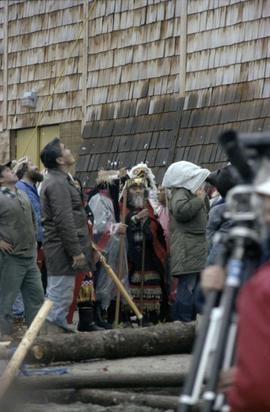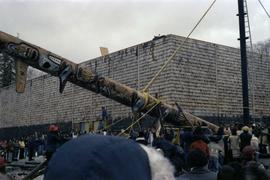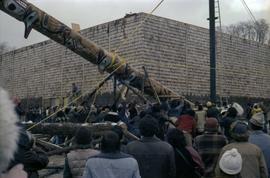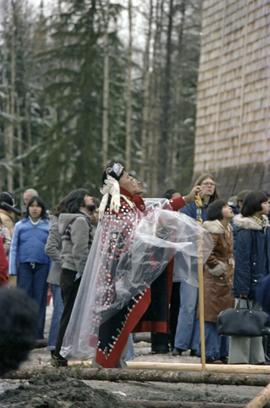Audio recording consists of an interview conducted by Bridget Moran with Mary John.
Audiocassette Summary
Scope and Content: Tape consists of a recording of Bridget interviewing Mary John primarily about her visit to the former native village site of Cheslatta
Side 1
Interview in process
00’05” Bridget interviews Mary John, Mary is referring to Madeline her niece.
1’00” Bridget asks Mary what made her decide to go to Cheslatta – to see the site where she had lived. Bridget asks if it was a ‘rediscovery’ trip. Bridget asks if this is where the village was burned out and flooded out [by Kemano development] Mary talks about her son Ernie wanting to go there and create a territorial hunting ground. She talks about going there with her niece Madeline and Alex
8’40” Mary explains how they got to Cheslatta; the travel there was by van through Francois Lake and via logging roads; it took about hour and half drive
11’00” Mary explains it was not the village that had been flooded that they went to; not the original village; she notes there was a campsite set up for them but it was cold at night. There were people there from Stellaco, about 75 total. She describes making bannock on a stick over the fire ‘the real bannock’ for the youth – like an “Indian pizza” (she laughs)
16’00” Mary continues to talk about the activities that she did at Cheslatta; show the youth how to fish, spear fish, clean fish, cut in strips and smoke the fish. There was no smokehouse but they created a lean- to and smoked the fish. Mary also notes another day Mary and Madeline took the youth to the bush and talked to them about uses of trees –
22’00”-20’25” Mary describes the steps involved with showing the youth at the Cheslatta camp how to collect spruce in order to build a smoke house for smoking the fish
29’30” Mary discusses food that she prepared for the gathering for the people
31’00” Mary talks about the group visiting the old village Cheslatta after the gathering
Mary then leaves to attend to a crying baby [a great-grand-child?]; they greet the mother
33’00” Bridget refers to a group of kids she talked to at Kamloops about their book Stoney Creek Woman. Bridget tells Mary she has letters written to Mary John by several students who had read Bridget’s book that she wants to show her
36’00” They continue to talk about the former Cheslatta village and what the former village residents want to do about the village; Mary notes there are archaeologists working there. Mary states the people have not yet received compensation for being taken off their land. Bridget notes those people loss their sense of community
38’31” Mary remarks the people at Cheslatta “have a good chief” “very humble person”
39’40” Bridget asks Mary about the Lejac pilgrimage. Mary then talks about the pilgrimage that is held at Lejac and that she had just been there ‘on Sunday night’; she notes it is arranged by Celina; she notes there were Tache people there. Bridget asks if there are children buried at Lejac and Mary notes there are children and students buried there – about 15 to 20 buried there.
43’00” They briefly discuss if this was a rediscovery for the Cheslatta people at the event. Mary agrees; she notes she stayed there for 10 days; Bridget remarks it was similar to Mary’s former camp of what she had experienced at Wedgewood. They talk about Mary’s son Ernie and that he has in Bridget’s view ‘leadership qualities”
45’30” Bridget asks about getting a bannock recipe for a Senior’s cookbook. Mary begins to tell the recipe
Side 2
47’40” Mary continues to show Bridget how to make bannock
50’00” Mary briefly refers to the event at Cheslatta again
End of tape
